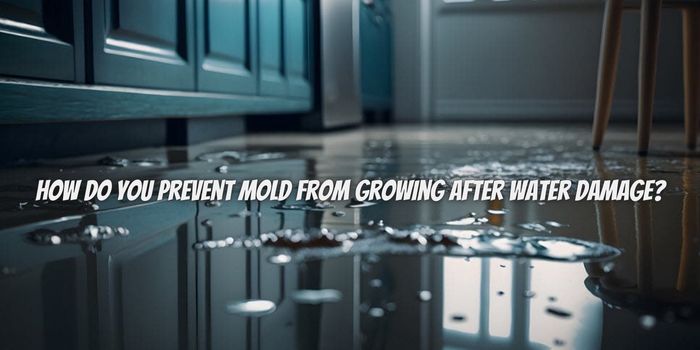Water damage can be a homeowner’s worst nightmare, and it doesn’t end when the water is gone. Water damage can usher in the growth of mold, which can cause health problems and extensive damage to your property. Controlling mold growth after water damage is compulsory, and it mandates swift and thorough action. By the end, you will study the steps you can take to safeguard your home and health from the threat of mold.
Mold is a type of fungus that succeeds in damp and humid conditions. It breeds through tiny spores that are invisible to the eye. Stopping mold growth is compulsory for several reasons. Mold can affect the structural integrity of your home, which ushers in costly repairs. Furthermore, mold exposure can lead to health issues such as respiratory problems, allergies, and skin irritations. To defend your home and health, it’s mandatory to take immediate action.
Steps to prevent mold
Here are some steps to eliminate mold:
Ensure your safety first
Before you initiate any restoration work, confirm your safety. If your home has encountered notable water damage, it’s compulsory to turn off the electricity and gas supply to sidestep any hazards. Moreover, wear protective gear such as gloves, masks, and goggles to shield yourself from possible pollutants in the water. Safety should be your top priority, during and after water damage.
Remove water
The first step in eliminating mold is to remove any standing water as quickly as possible. Mold can start growing within 24 to 48 hours of exposure to moisture. Utilize a wet-dry vacuum, buckets, or pumps to clear the water. Open doors and windows to enable ventilation and it will also aid in drying out the affected area. Remember that mold can start expanding within 24-48 hours after water damage, so timing is crucial.
Dry your home
Clean and disinfect all affected surfaces. Use appropriate cleaning solutions and follow manufacturer recommendations. Proper drying is compulsory to stop mold growth. Fans, dehumidifiers, and opening windows can aid in the drying process. Make sure to reach every area of your home, including spaces behind walls and under flooring. It’s important to dry the area thoroughly, as even a small amount of moisture can enable mold development.
Evaluate the damage after removing water
Carefully reckon the damage. This includes inspecting for structural damage, as well as identifying areas where mold has already started to grow. Take photographs of the damage for insurance purposes, and make a detailed list of the affected items and areas in your home.
Remove wet material
If materials like drywall, insulation, or carpet are still wet, they must be removed. Mold can thrive within these materials, making it formidable to eradicate. Removing and replacing them will confirm your home is mold-free. Dispose of these materials following local rules and regulations.
Fix the source of water damage
To stop future mold growth, it’s compulsory to manage the source of the water damage. Fix any leaks, repair damaged roofs, and verify your home’s drainage systems are functioning accurately. Installing a sump pump and proper ventilation can aid in keeping moisture away. Confirm your home’s humidity levels remain between 30-50%, as excessive humidity can usher in mold growth.
Monitor the area
Even after taking all essential preventive measures, it’s mandatory to keep an eye on the affected area for any signs of mold regrowth. Mold spores are endless, and they can remain inactive for a long time. Regularly inspect the area for any discoloration, bad odors, or other signs of mold. Detecting it early will make the elimination process much easier.
Seek professional help
While some minor water damage incidents can be handled without professional help, but in some cases, especially if the water damage is extensive, it’s recommended to pursue professional service. Mold remediation specialists have the knowledge, instruments, and proficiency to tackle severe mold infestations safely and effectively. They can also evaluate the extent of the damage and confirm that there are no hidden pockets of mold present in your home.
To end, Mold exposure can usher to a range of health problems, which might include allergies, asthma, respiratory infections, and skin irritations. Safeguard your family’s health by taking mold prevention seriously. Consider using mold-resistant materials in your home, especially in areas open to water exposure, such as bathrooms and basements. These products are devised to eradicate mold growth. From safety measures to thorough drying and disinfection, every action is mandatory to sidestep mold growth.
Remember to manage the root causes of water damage and keep an eye to confirm that your home remains a safe and healthy environment for years to come. Seeking professional help can aid you in eliminating mold from your house. So search for water damage restoration Boston on Google or Yelp and take a step toward a mold-free house!




